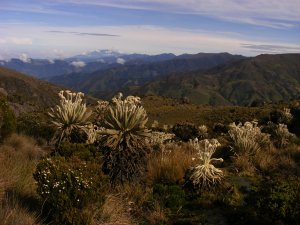Phylogenomics of species radiations
Phylogenomics of species radiations
Species richness and endemism of the tropical-alpine floras of South America and Africa have attracted botanists for two centuries, dating back to Alexander von Humboldt. The alpine flora of the (sub)tropical Andes, mainly the páramo, is extremely diverse and rich in endemic species and has been identified as possibly the fastest evolving world's biodiversity hotspot. In contrast to the páramo, the flora from tropical-alpine areas of East Africa is relatively species-poor but rather rich in endemics.
The main goal of this research is to compare the timing of plant radiations in tropical-alpine habitats, detect key evolutionary processes involved in these radiations, particularly those related to Pleistocene climate oscillations, and assess their relative contribution to the origin of plant diversity in these biodiversity hotspots.

We combine state-of-the art methods in SNP-genotyping (HybSeq and hyRAD sequencing), phylogenomics (multispecies coalescent phylogeny reconstruction) and comparative phylogeography to infer concordant patterns in the timing and progress of species radiation. We focus on seven genera mainly from species-rich plant family Asteraceae, all of which underwent species diversification in the tropical alpine habitats of Southern America (Senecio, Loricaria, Oritrophium) and Eastern Africa (Dendrosenecio, Helichrysum, Lobelia).

